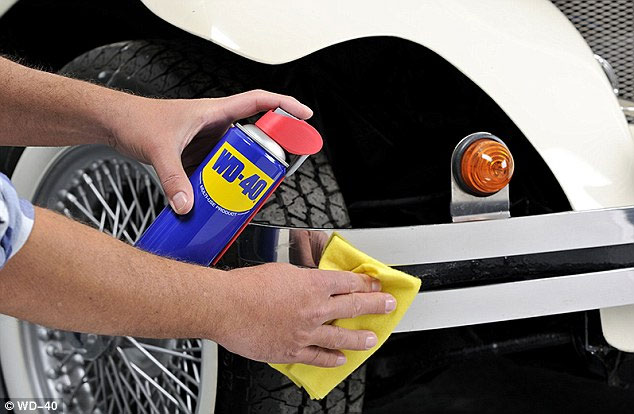Most of us have a can or two of this water-displacement spray hanging around the house or the garage and it often gets trotted out as the cure for everything. It does have lots of amazing and practical uses, which is why every household should have some. However, there are some places it shouldn’t go – it’s like kryptonite to a chain and conveyor from Renold.com, for example – and so you need to be clued up.
Let’s take a look at what this panacea in a can can(and can’t) actually do for you…
Table of Contents
You can lubricate your shovel
That’s right – lube up a shovel. Or, indeed, any gardening implement. This is especially useful if you’re digging in heavy clay, as it can accumulate on the shovel, making life difficult. A squirt of WD40 means that the soil just slides off nicely.
You can clean tiles
Make-up is notoriously hard to remove from faces, let alone tiled floors and grouting. If you’ve had a spill, use a squirt to remove it easily – from both the tile and the grouting. Be sure to clean it away with detergent when you’re done, though, as it’s slippy.
You can remove stuck-in chewing gum
WD40 can help to remove chewing gum from hair, clothes, carpet and other fabrics. It’s way, way easier and cheaper than getting a new carpet or trying to pass off your new “haircut” as the latest style.
You can break in leather with it
If you have stiff shoes, or a stiff new leather belt, a judicious application of WD40 will help you to soften it up a bit.
You can release fused Lego blocks
We all know that Lego blocks are held together by some mysterious superforce; we also know that the special separator tool develops legs and disappears within minutes of the box being opened. This is the real reason WD40 was invented. True fact.
You can shift crayon marks from walls
And from anywhere else they’re not meant to be, too. Furniture, leather, wallpaper, windows, priceless canvases… Just spray, wipe and say nothing about it. Ever.
You can clean up and de-rust blades and tools
If your hacksaw or circular saw blade has rusted a bit, then spray on some WD40 and rub it with a clean cloth. It’s also useful for cleaning blades after each use if they have, for example, tar or thick sap on them.
When not to use WD40
When your door hinges are squeaky
The squeaking will stop, but the WD40 actually attracts dust and dirt, so you’ll end up with streaky, gummy hinges and doors that are a real pain to clean.
When your bike chain needs lubing
Again, the dust and dirt. Bike chains need special lubricants, which usually contain Teflon as these preparations don’t collect dirt like it’s going out of fashion.
When your lock has become stiff
Everyone’s done the old WD40-on-a-key trick and while it’ll work, the compound will wear down the lock’s internal workings. Use graphite powder instead, unless it’s an emergency, of course.
When your iPhone’s home button is stuck
WD40 will actually degrade the plastics, and if some gets into the electronics, it’ll damage them surprisingly rapidly.













